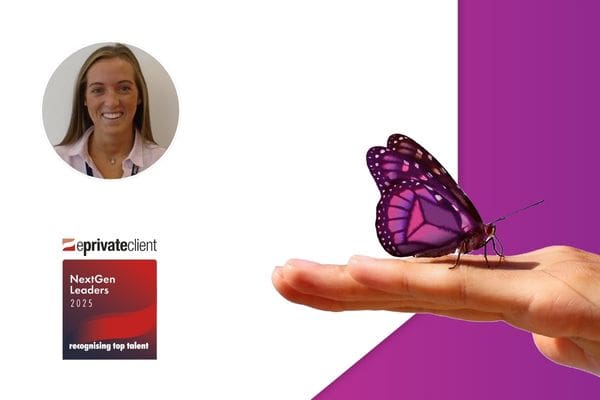Investment properties can be a great way to build wealth, but can also create headaches when it’s time to divide your assets – here’s how to simplify things while continuing Section 1031 tax deferral.
For many Americans, saving enough to leave something behind for their children and grandchildren is the primary goal of investing. Property ownership can be an ideal way to build generational wealth, especially when taking advantage of IRC Section 1031, which allows property owners to defer taxes on the sale of business or investment property when they purchase a like-kind property. Thanks to Section 1031, it’s easier to upgrade to higher-value properties and build greater wealth for the future.
The drawback to property ownership is that when you pass, you’re not leaving behind cash that can easily be divided among your heirs. So, should you sell your investment properties before you die to make this process easier? There are advantages and disadvantages to holding a 1031 property until death, and with help from a relatively recent kind of 1031-eligible investment vehicle, the whole process can become much easier.
What happens to my 1031 exchange property when I die?
One of the first things any good professional will tell you about 1031 exchanges is that taxes are deferred, not avoided. When you sell a property as part of a 1031 exchange, you won’t have to pay capital gains taxes on the sale right away , and can instead put more of the sales proceeds toward the purchase of replacement property. But you’ll still owe taxes on that gain – when you eventually sell your replacement property, your tax burden will be calculated using the original basis from the purchase of your initial 1031 property.
It’s possible to continue to defer those taxes if you perform another like-kind exchange. Your former replacement property becomes the relinquished property for this new exchange, and taxes will again be deferred. There is no limit to the number of subsequent exchanges you can perform, and the deferred taxes will only be due once you complete a taxable sale.
Performing a series of 1031 exchanges like this isn’t possible in most cases. According to one study, “Less than 20% of replacement properties are disposed of in a subsequent exchange,” meaning most exchangers only perform a single exchange, let alone several in a chain. However, it only takes a single exchange to achieve some added benefits of a 1031 exchange, as long as you’re able to hold a replacement property until your death.
When your heirs inherit your assets, they receive a step up in basis. This means that when they eventually sell the property, the basis for their capital gains tax burden will be based on the value of the property when they inherited it, not when you acquired your initial 1031 property, effectively zeroing out much of the tax burden. This only works if the property is willed, not transferred before death, and depending on how long you’ve held the property, the impact could be significant.
Let’s imagine that 50 years ago, you purchased an investment property valued at $50,000. Over the next few decades, you performed a series of 1031 exchanges into higher-value properties, wisely taking advantage of the loose definition of like-kind to invest in key markets, so that your real estate portfolio is now worth $5,000,000.
If you were to sell before your death, your capital gains tax burden would be based on the original $50,000 purchase price of the initial property. But if you will your properties to your children, their basis would reflect the current $5,000,000 fair market value. By holding your 1031 properties until your death, you’d be able to eliminate much of the tax burden and leave more behind for your children. This is sometimes known as the “swap till you drop” strategy. While not always possible, it presents enormous value for those who can implement a 1031-based estate planning strategy.
While leaving more behind for your heirs is good, trouble can arise when it’s time to divide the assets. As mentioned, property is not like cash: your heirs can’t just divide it up and walk away. If you have multiple beneficiaries, each getting a different percentage of your estate, the math can become tricky, especially for those who own a single high-value investment property that can’t be divided.
If you own multiple properties, valuation of those properties could take time, and may make things uneven. If you have three children and three investment properties that are all of equal value, it would be simple, but chances are your situation isn’t so tidy. The result for most families is that some of your assets can’t be divided, and your heirs will have to come to a decision about what to do with your investment properties.
You don’t want to lose the value gained through a swap-till-you-drop strategy, but you also don’t want to create chaos when you pass. It would be great if instead of one property, you could separate your real estate portfolio into individual interests that are easy to divide up. This is just what can be accomplished with DSTs.
Passive real estate investment through Delaware Statutory Trusts
A Delaware Statutory Trust (DST) is an investment vehicle through which investors can own fractional shares of a professionally-managed real estate portfolio. There are a wide variety of DSTs on the market, including single and multi-property, those based in certain regions, and DSTs focused on specific sectors of real estate.
DST interests can be used as 1031 replacement properties, allowing exchangers to transition from active property management to passive ownership. DSTs are often ideal for longtime property owners entering retirement because they provide steady income without the stress of active management.
For those interested in pursuing a swap-till-you-drop strategy, a 1031 exchange into a series of DSTs could be a way to continue 1031 tax deferral while passing off the day-to-day responsibilities of whole property ownership. Delaware Statutory Trusts can also offer specific benefits for your heirs.
How estate planning with Delaware Statutory Trusts differs from whole property ownership
There are several ways in which the willing of DST interests differs from willing whole properties. For starters, the professional management of a DST means your heirs won’t be tasked with managing a property (or collection of properties) while sorting out your estate. Depending on the holding period of a particular DST (which is established prior to investment), it may be a long while before any decision needs to be made about whether to cash out in a taxable sale or perform a 1031 exchange out of the DST.
Valuation of the investment portfolio could be made much easier with data supplied by the DST. It’s also possible that your estate could qualify for a reduction in estate taxes because the lack of control and marketability of a DST interest (there is a secondary market for DST interests, but it is limited) could result in a discount of the assessed value of the estate. This would only apply to the assessed value for estate tax purposes, but if you’re lucky enough to have an estate valued at higher than the threshold ($13,990,000 for 2025), this may matter to you.
A major benefit of DSTs is their low investment threshold. A single property valued at $500,000 could be exchanged into five separate DSTs, each with a $100,000 minimum investment, providing instant diversification. Having multiple DST interests instead of a single property would make it much easier to divide things up in your will. In addition, DST interests can be split upon your death, meaning even a single DST interest would be easier to separate than a single investment property.
Once the DST interests are divided among your heirs, each can decide what they want to do: sell the DST interest on a secondary market, or hold it for the duration; perform a 1031 exchange into another DST or investment property, or cash out through a taxable sale; they could even decide to transition to a REIT through a 721 UPREIT strategy.
What about properties that you co-own? If you and a partner (or partners) own an investment property, how will your heirs manage that relationship? The situation could be simplified if you and your co-owners perform what is known as a Swap & Drop: you sell the property as part of a 1031 exchange into a series of DSTs, and then dissolve the partnership, with each partner taking ownership of DST interests equal to their ownership percentage. You can then will your interests to your heirs without the involvement of your partners.
Maximizing tax deferral for a 1031 exchange into a DST
While the advantages of Delaware Statutory Trusts in retirement and estate planning are available to all investors (you don’t have to perform a 1031 exchange to invest in a DST), the fact that DST interests can be used as 1031 replacement properties makes this strategy even more attractive to those eligible for 1031 tax deferral.
A DST 1031 exchange is not like an average exchange. If you have a high-value property, it’s likely you’ll be exchanging into multiple DSTs. A multi-property exchange requires careful calculation of the debt ratio for your property and the DSTs in which you’re going to invest in order to avoid a taxable boot that might unnecessarily reduce some of your tax deferral benefits.
Every 1031 exchange requires a Qualified Intermediary (QI) to handle funds during the exchange. While there are many companies that can act as your QI, not all have experience with Delaware Statutory Trusts. JTC is the QI of choice for many DSTs because of our institutional-grade capabilities: individual investors get access to the same technology we employ for large corporations, including our Exchange Manager portal that allows exchangers to access important documents and information at any time, from anywhere, 24/7.
If you’re considering a 1031 exchange into a Delaware Statutory Trust, get in touch with JTC to take advantage of our experienced team and industry-leading technology.
Key contact
Stay Connected
Stay up to date with expert insights, latest updates and exclusive content.
Discover more
Stay informed with JTC’s latest news, reports, thought leadership, and industry insights.
Let’s Bring Your Vision to Life
From 2,300 employee owners to 14,000+ clients, our journey is marked by stability and success.

















